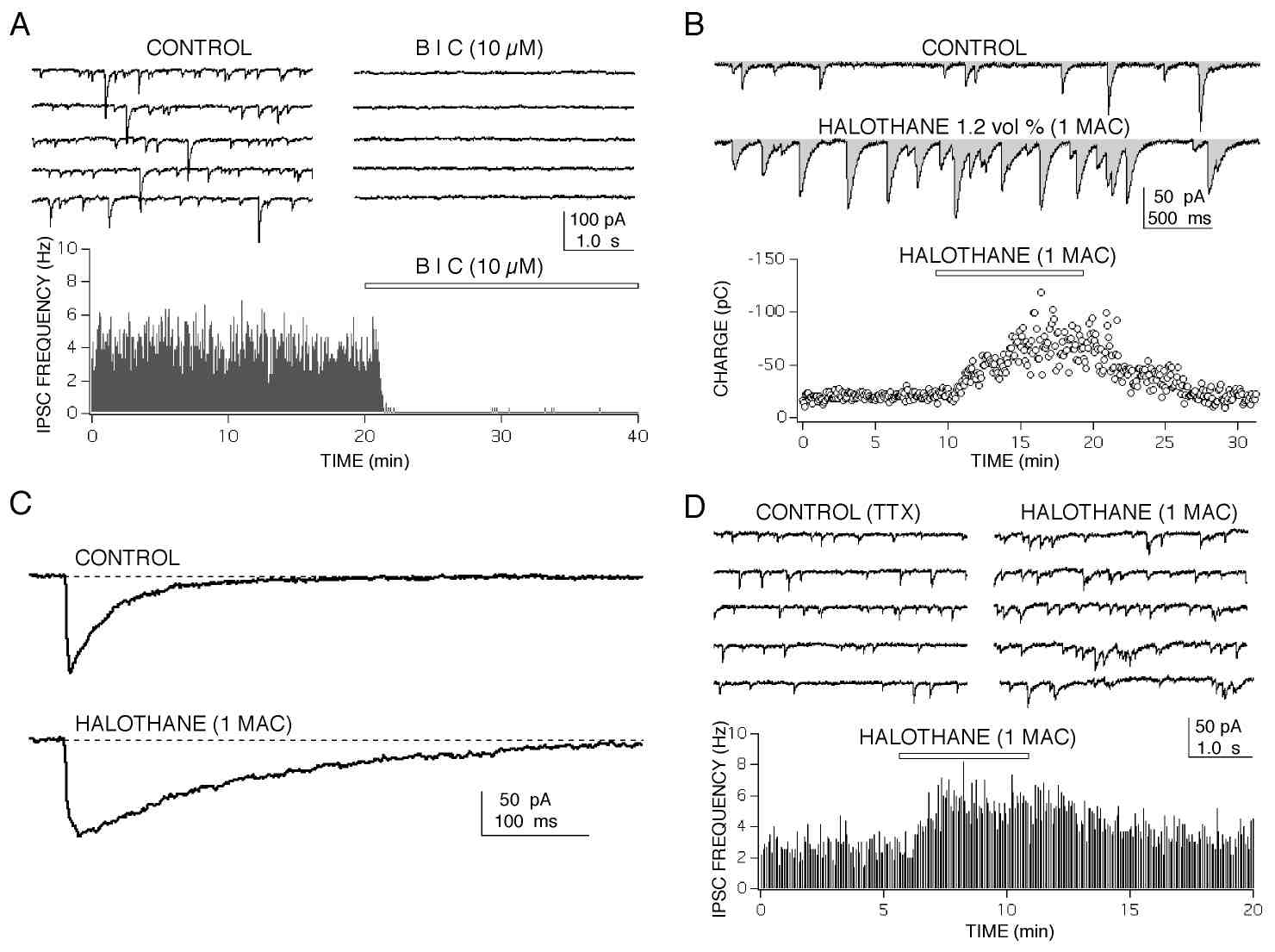 t H
t HGABA is a neurotransmitter used by a majority of inhibitory synapses in the mammalian CNS. Abused inhalants and anesthetics, like toluene and halothane, appear to increase GABA-mediated synaptic transmission by pre- and post-synaptic actions. GABA synapses can be characterized by their sensitivity to the GABA receptor antagonist, bicuculline (below A: BIC). Halothane increases the amount of GABA released by presynaptic nerve terminals, seen as an increased frequency of inhibitory postsynaptic currents (IPSCs) recorded from a CA 1 neuron (B). On the postsynaptic side, halothane prolongs the time course of IPSCs so each current lasts longer (C). Thus, the amount of inhibition dramatically increased when measured as the integral of the current trace (B: shaded area in top recordings; pC - pico Coulomb). These effects on GABA-mediated IPSCs would lead to an overall depression of the CNS, consistent with the loss of consciousness, recall and movement that is associated with anesthesia, and would also contribute to memory impairment produced by anesthetics and abused inhalants.
 t H
t HHalothane was applied for ten minutes and inhibitory
currents were integrated every four seconds. Inhibitory current increased
over three fold within ten minutes and rapidly recovered
to control (pre-anesthetic) levels within 10 minutes following removal of
halothane. Halothane-induced increased IPSC frequency (D) is indicative
of a presynaptic effect to increase the release of GABA from inhibitory nerve
terminals at synapses. These effects
combine with depression of glutamate synapses and other minor effects
to produce the loss of recall
and loss of consciousness
that are important components of anesthesia.